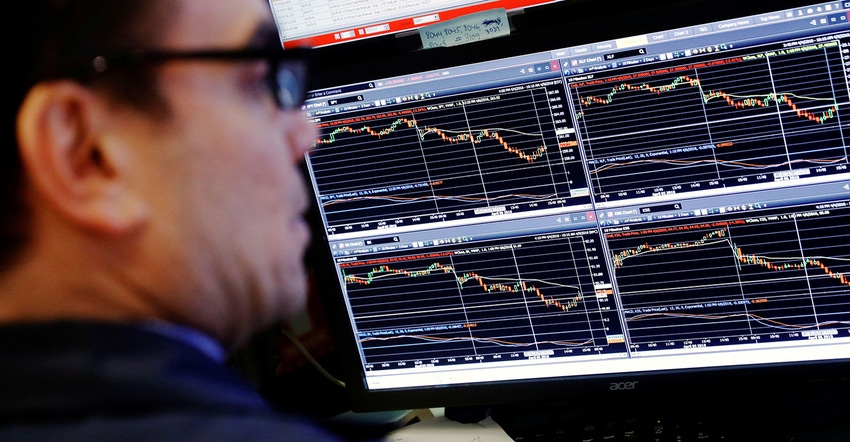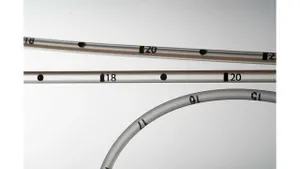Resin Price Report: PP Resin Prices Drop for Seventh Straight Week
Polypropylene (PP) producers ramped up production in July and August, growing inventories to near-record levels just as new production capacity came online in Canada.
October 5, 2022

Completed volumes of spot resin trading tallied slightly below average last week as buyers and sellers closed out September, reports the PlasticsExchange in its Market Update.
The slower trading activity came as market participants monitored Hurricane Ian’s impact on Florida, far removed from the Gulf Coast's petrochemical infrastructure. Hurricane season officially ends on November 30, leaving enough time for another major storm to hit vulnerable production. New storms are brewing in the Atlantic, but nothing that will threaten Gulf production in the next week or so.
Mixed resin price direction
The somewhat limited trade flow also came with mixed price direction, as polyethylene (PE) held steady for a fifth consecutive week while polypropylene (PP) dropped yet again for a seventh straight week. Just a few fresh Prime PE domestic railcars were offered and most PE export offers had already dried up for the month. PP offers continued to come amid a heavy flow of off-grade railcars. Producers were eager to drop spot Prime prices as they sought to line out their fourth quarter reactor time.
This clear disconnect between PE and PP pricing highlights a fundamental difference in producer efforts to manage the still over-supplied situation, according to the PlasticsExchange. “We have seen PE producers restrict production while leaning heavily on the export market to trim down inventories from record levels,” writes the Chicago-based resin clearinghouse in its report. “To a certain extent they have been successful in reducing their resin stocks and stemming the slide in already well-discounted spot pricing, even as contracts still come down. On the other hand, PP producers actually ramped up production in July and August, growing inventories to near-record levels just as new production capacity had started in Canada.”
Polymer-grade propylene (PGP) monomer prices dropped substantially in September, which is a sign that PP reactor rates have finally been cut, but it came too late. PP prices have been in freefall, and many buyers just want to stay out of the way. If PP rates have been cut hard, it could still be some time before the surplus resin is soaked up. Nevertheless, it would be a big step in the right direction for producers, who have seen their substantial margins garnered in 2020 and 2021 erode over the past several months, notes the PlasticsExchange.
Once again, PE was the more dominant resin to change hands in the market. PE prices stayed flat, as the lower end of the off-grade market firmed for another week while the top end of the Prime market continued to trim down, bringing a tighter range in pricing throughout the marketplace.
Spot PE trading split between high- and low-density grades
Most spot trading was split between high- and low-density PE grades, which have seen somewhat tighter availability. Linear-low-density PE remained more plentiful with fewer spot needs filtering into the PlasticsExchange platform. PE has also tightened up a bit down south, subsequent to a producer in Mexico reporting its crackers and derivative plants were offline because of an ethane pipeline explosion.
PE exports remained good, but were hampered by competitive international offers as well as the rapidly rising US dollar, which makes Houston pricing seem more expensive when converted into foreign currencies. Producers have had better results cutting PE inventory than PP, evident with the nearly 135-million-pound drop seen in August stockpiles. PE producers have also cut operating rates in September and are expected to continue reducing rates for the remainder of the year. The drop in inventory and run rates come as producers seek to regain pricing power: There are $0.10 to 0.12/lb worth of increases nominated through the end of October, but they are mostly seen as a hedge against a potential disruptive hurricane. Even with stable spot pricing for the past few weeks and lower run rates, an increase for September contracts will not happen, as a $0.03 to 0.06/lb decrease is most likely to confirm, according to the PlasticsExchange.
PP buyers tease sellers with low-ball bids
PP trading was outright slow, as a tsunami of resin continued to flood the market while buyers waited on the sidelines and essentially teased suppliers with ever-dropping bids. Weak demand from a slowing economy highlighted the large overhang of inventory and continued to apply downward pressure on spot and contract prices.
Prime homo-polymer (HoPP) and co-polymer (CoPP) dropped another penny as September closed, bringing the month’s rout to $0.11/lb for HoPP, while CoPP lost some of its premium to bring the month’s losses to a steep $0.14/lb. PP offering lists were long and availability was more than plentiful, providing buyers with comfort that prices would not shoot higher any time soon. The PlasticsExchange, however, reports seeing signs that production has been cut in September, including a disproportionate amount of off-grade material and a steep drop in spot monomer prices as less monomer is consumed to make resin. If so, producers will start Q4 with operating rates much lower compared to the previous quarter as they work down inventory levels following the roughly 275-million-pound increase seen in July and August.
In the meantime, PP contracts were estimated to settle down $0.08/lb for September, which would include a cost-related decrease and a reduction in margins, following the $0.05/lb decline in PGP. Unless something changes, the continued decline in spot monomer prices following the drop in the September PGP contracts will bring another sharp decline in October PP contracts. Not to mention the additional PP capacity that is set to come online in Louisiana before the end of the year, which will undoubtedly provide extra downward pressure on the already saturated market.
Read the full Market Update, including news about PGP pricing and energy futures, on the PlasticsExchange website.
You May Also Like


